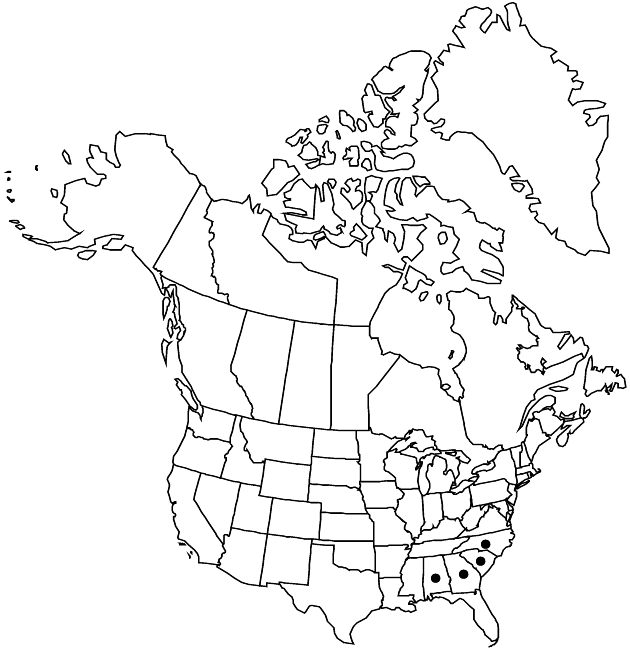Pityopsis pinifolia
Trans. Amer. Philos. Soc., n. s. 7: 318. 1840.
Perennials, 20–50 cm; rhizomes 2–15 cm. Stems erect, sometimes reddish brown, branched distally, slender, striate, glabrous or sparsely piloso-sericeous. Leaves: basal blades sessile, linear, shorter than cauline, 10–40 × 2–4 mm, margins sparsely pilose, apices acute, mucronate, faces sparsely piloso-sericeous; cauline 20–50, crowded, spreading to ascending, light green, proximal linear-filiform, 30–70 × 0.8–1.5 mm, margins sparsely pilose, apices acuminate, glabrate; distal 15–60 mm. Heads 1–10, in corymbiform arrays. Peduncles sparsely bracteolate, 1–4 cm, sparsely piloso-sericeous. Involucres turbino-campanulate, 5.5–8 mm (usually shorter than pappi). Phyllaries in 5–6 series, scarious, apices ciliate, faces glabrate. Ray florets 9–13; laminae 5–7 mm. Disc florets 15–35; corollas 4.8–6.5 mm, lobes 0.5 mm, glabrate. Cypselae fusiform, 4 mm, ribbed, faces sparsely strigose; pappi: outer of linear to narrowly triangular scales 0.6–0.9 mm, inner of 25–30 bristles 4.5–6 mm. 2n = 18.
Phenology: Flowering late summer–fall.
Habitat: Sand hills
Elevation: 10–100 m
Distribution

Ala., Ga., N.C., S.C.
Discussion
Pityopsis pinifolia is known from a few scattered sandy locations near the coast in South Carolina as well as on fall-line sand hills. It is known to hybridize with P. aspera var. adenolepis in Moore County, North Carolina. Although it is sometimes locally common, overall it is very uncommon and considered threatened in Georgia and Alabama. The report from Mississippi has not been confirmed. It was reported as ephemeral in New York. The species has also been called the Taylor County goldenaster, referring to one of its locations in Georgia.
Selected References
None.